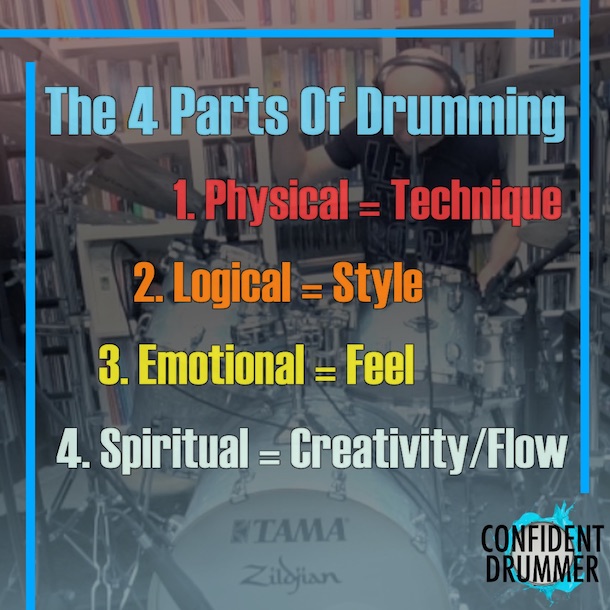CONFIDENT DRUMMER BLOG
A Place To Look For Inspiration And Resources, For Your Growth As A Musician. A Collection Of Various Bits Of Wisdom In The Form Of Lessons, Articles, Exercises, Videos, PDFs, Studies, Insights, Excerpts From The Books.
40% OFF All Methods!
30 Day Money Back Guarantee: If in one month of daily practice you don’t see massive improvement, you will get a 100% refund.
Check Out The Offer On Each Method’s Page.

If we are interested in studying and analyzing the greatest drummers of the Gospel scene, Aaron Spears is the perfect name to start with. Very strong, energetic and powerful drummer, he is known for his unbelievably fast orchestrations and his extraordinary fills, which he plays with jaw dropping effortlessness and passion.
Groove is magic, groove makes you move, groove is when you see heads nodding in front of you. There’s nothing like being able to make music and grooving with a band. I wanted to write a method that included all the most powerful tools and workouts that can help drummers improve in this area. In this free excerpt I'd like to share with you 24 examples that will give you an idea of how much fun studying groove can be. And how effective it is!
I love shortcuts, and I always try to find ways to distill the best examples for each topic I cover, following the famous 80/20 principle. These are definitely among the 20 percent of practices that will give you 80 percent of the results as far as coordination goes.
Personally, I came to the point where I never edit anything I do. Not because I’m flawless, but because I came to appreciate the fact that a full unedited take is true, a lot more than I like the idea of it being perfect.
A full take is a snapshot. It’s like a photograph of that unrepeatable moment. That’s where the magic is.
50 hours of shot footage, 2000 hours of work, more than 10 years of research. Condensed in 270 pages, 950 licks, 4 hours of video demonstrations. When I decided to write this method my objective was to create the ultimate drum chops guide.
Using models and frameworks is extremely useful when trying to master complex subjects like the art of drumming. They are like maps that simplify reality and allow us to understand it better and orient ourselves more effectively in vast and sometime confusing territories.
Use what you are about to learn to work on the parts that are less developed in you.

Popular Posts




















